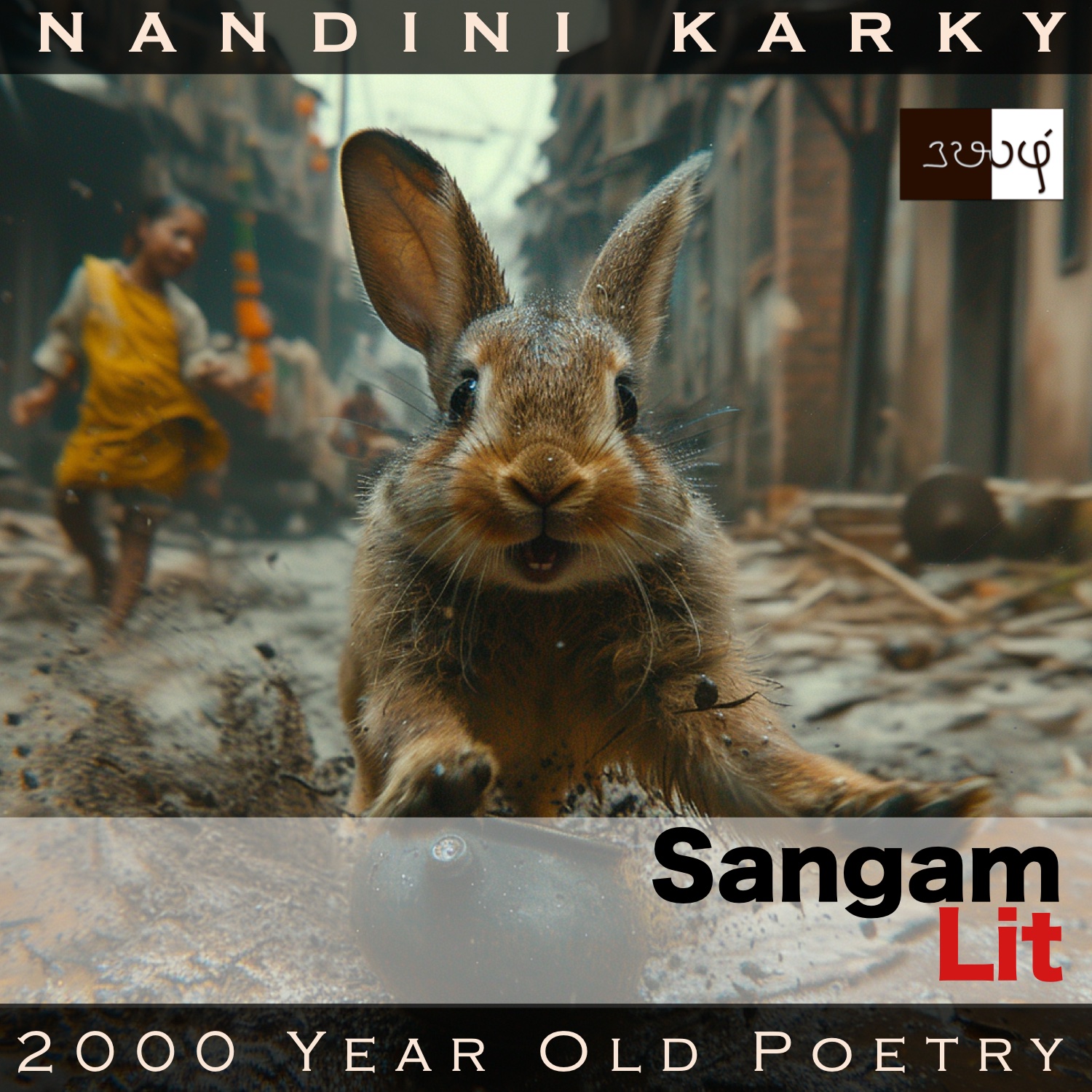Podcast: Play in new window | Download
Subscribe: Apple Podcasts | Spotify | Amazon Music | Android | iHeartRadio | TuneIn | RSS | More
In this episode, we observe action-packed moments, as depicted in Sangam Literary work, Puranaanooru 322, penned by the poet Avoor Kizhaar. The verse is situated in the category of ‘Vaagai Thinai’ or ‘Victory’ and etches the terror evoked by the leader of a town.

உழுது ஊர் காளை ஊழ் கோடு அன்ன
கவை முள் கள்ளிப் பொரி அரைப் பொருந்தி,
புது வரகு அரிகால் கருப்பை பார்க்கும்
புன் தலைச் சிறாஅர் வில் எடுத்து ஆர்ப்பின்,
பெருங் கண் குறு முயல் கருங் கலன் உடைய
மன்றில் பாயும் வன் புலத்ததுவே
கரும்பின் எந்திரம் சிலைப்பின், அயலது
இருஞ் சுவல் வாளை பிறழும் ஆங்கண்,
தண் பணை ஆளும் வேந்தர்க்குக்
கண் படை ஈயா வேலோன் ஊரே.
Another verse that delights our eyes with the magic of movement. The poet’s words can be translated as follows:
“Like the fully-grown horns of a plowing bull, spreads the thorny branches of the rough-trunked cactus. Close by, amidst the stubble of the recently harvested millet crops, scanty-haired children look for black rats. Spotting one, taking their bows, they roar. Hearing this uproar, a huge-eyed small rabbit leaps in the front yard, breaking a black pot in that drylands region. Here, hearing the sound from a sugarcane crushing machine, nearby a thick-necked scabbard fish twists and turns. This is the town of the man with a spear, who gives no rest to the eyes of great kings ruling over moist and lush farmland towns!”
Let’s explore the details herein. The poet starts by mentioning the horns of a bull and as we have come to expect, this is to equate this animal feature to a plant’s characteristics -the forking thorn-filled branches of a cactus, to be specific. The presence of this cactus plant tells us this is no farming land filled with flowing water, but a drylands region. As can be expected, only the rough and tough millets sprout in this region and after the crop has been harvested, amidst the stubble, little children are to be found, hunting for rats. When they spot one, they let out such a shout, that a rabbit leaps on a black pot in the front yard and shatters it, describes the poet, adding further details that the noise of a sugarcane crusher also troubles a scabbard fish nearby. While a scabbard fish being bothered about some noise may be the poet’s imagination, what struck me was the mention of the word ‘Enthiram’ which means ‘machine’. That the Sangam folks had built an apparatus to squeeze the juice of a sugarcane two thousand years ago is some indication of their engineering mindset!
Returning, we see that the poet has rendered these striking details to mark a particular town. The poet then turns the focus on this town’s ruler, a leader with a spear and concludes with the words that this leader seems to give sleepless nights to great kings ruling over farmland towns. Note how the land ruled over by this leader is a humble drylands town with no great resources, a land that’s dependant on the rain for its crop and food. Even so, this leader has the strength and skill to induce fear in the minds of rulers of prosperous regions, the poet implies. The way the poet has layered fear without explicitly stating it, portraying the actions of the rat, the rabbit and the fish and then presenting the core of this king’s prowess makes this verse, a screenplay masterclass in subtle exposition!




Share your thoughts...